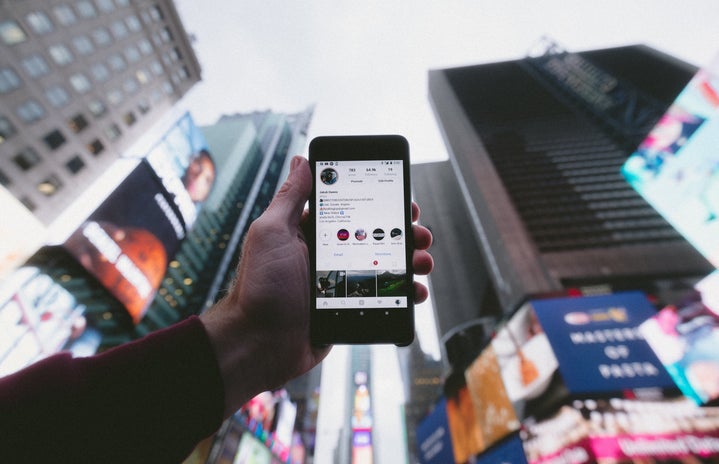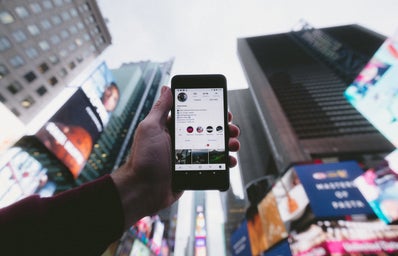In the last century alone, the world of dating has changed so frequently that it might as well be a rollercoaster. Before little rectangles called iPhones took over and a poke had nothing to do with a social network, dating etiquette went through many trends. Many of these trends, like proper first date attire and the inevitable meeting of the parents, have evolved as society has progressed and women have steadily earned more of an equal status in relationships. But with all of this progress and new technology, is dating in the digital age easier or is there more pressure now than ever before?
In the 1920s, women known as flappers rejected corsets and raised their hemlines to reveal what was hiding underneath all of that fabric all along: ankles and knees. Gasp! As a woman of the Jazz Age, your date would possibly pick you up in a Ford Model T. Thanks to Prohibition with its ban on alcohol, the two of you would spend the evening at a secret speakeasy sipping cocktails and listening to jazz music. Your friend could have been set up on a date with someone she had never met. The phrase “blind date” would be the result of this trend.
If you jump ahead three decades, a typical 1950s date night location would be the movie theater. Your date would have asked you so politely and made sure to meet your parents before escorting you out, holding the car door open for you and paying for your movie ticket. After the movie, the two of you would hit the local diner for dessert (one milkshake with two straws obviously). Before you knew it, you would be wearing his letterman jacket around your shoulders and his class ring around your neck.
Today’s dating etiquette is a hodgepodge of mixed signals, flirty emoticons and Facebook pokes. With popular social media platforms like Facebook and Twitter providing an endless amount of information about a person like school activities, music preferences and even family relationships, information shared on first dates is already common knowledge. Proper post-first date etiquette adds the element of constant communication known as texting. Daters can instantly text each other with flirty hints that the date went well or wait to say anything to possibly avoid a second date. With today’s technology, getting to know someone before dates and sending out feedback after dates are both easy skills that mandate the process of modern dating.
While Facebook is the portal to vast amounts of information, a new craze called Tinder limits available information in hopes of connecting people in a short amount of time. The app allows users five pictures from Facebook and a short biography. After setting distance and age standards, users can view people in close proximity. Shared Facebook interests and friends can also be viewed. A swipe to the right means a user is interested in the person, while a swipe to the left is a rejection. If two users match up in right swipe lovers’ heaven, they can chat with each other.
Although Auburn University sophomore and Tinder user Sloan Barwick has never met her matches in person, the app is also a place to make friends. “I have made really good friends through the app where we text on a daily basis,” she said. Most of her interactions have been normal, but Barwick is aware of the dangerous digital dater. “The only scary thing is if some guy is really creepy with an opening line. But there are weird ones once in a blue moon,” she said.
Being able to hide behind an iPhone screen makes it easier for users to flirt and take the next step like becoming Facebook friends, exchanging numbers or even meeting up for a date. “It’s the Internet,” Barwick said. “They don’t have to see you in person, so everyone is confident and speaks their mind.”
With apps like Tinder and new technology being developed every day, it seems like tracking down potential boyfriends and girlfriends with similar interests would be easy. However, the possibility of miscommunication could make dating more difficult than ever before. The difference between a smiling emoticon and a winking emoticon in today’s digital world could be a date. As ridiculous and petty as that may sound, society relies heavily on images. Young people with an Internet presence spend a large portion of their day conveying a certain personality on Facebook, Twitter and Instagram, while simultaneously ensuring that the most appealing pictures are front and center on their profiles. MTV’s hit show “Catfish” thrives on deceptive Facebook profiles with inaccurate photos. Not surprisingly, many of the users with fake profiles have low self-esteem. Today’s society is a visual one, and those in the dating world duly note it.
While today’s technology puts a treasure trove of information at your fingertips, finding matches on Tinder or snagging a date with five shared Facebook interests is easy and common. However, the prominence placed on social network platforms puts more pressure on Internet users to overanalyze every text or Facebook message. Furthermore, users behind a computer screen feel the need to concentrate on mere physical appearance to maintain relevance and popularity online. Dating is and always will be a rollercoaster–dating in the digital age simply adds a little more pressure, a bit of anxiety and the worry of choosing the best Instagram filter.

